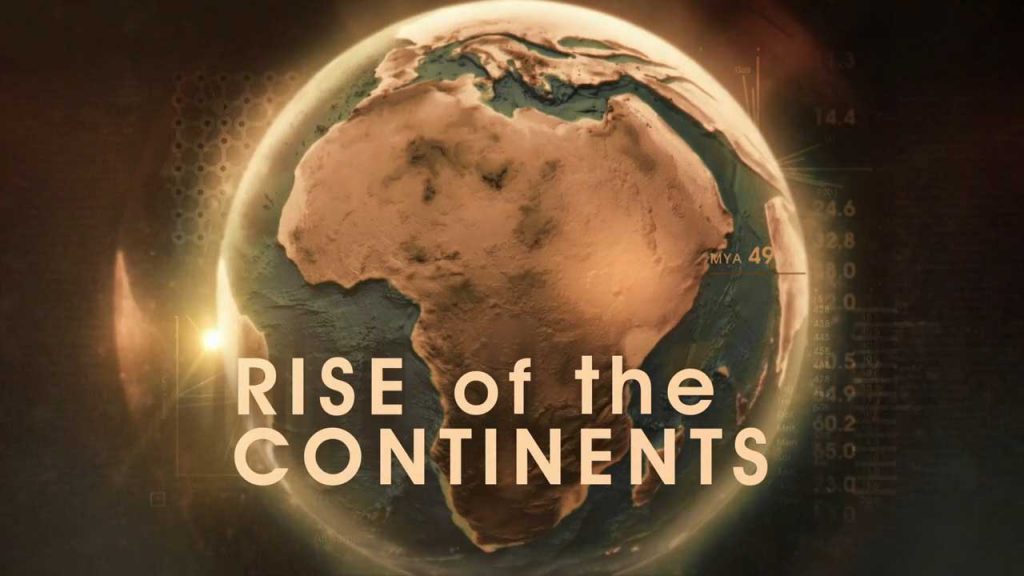Rise of the Continents episode 1 – Africa: Geologist Prof Iain Stewart shows how the continent of Africa was formed from the wreckage of a long lost supercontinent. Professor Iain Stewart reveals how our iconic continents were created, and how their tumultuous past has shaped our life today. It features, among other things, creation of Victoria Falls, diamond mines of Sierra Leone, skeletons of early whales buried in the sand, and the nutrient-rich grass of the Serengeti Plains.
Using clues like Africa’s spectacular landmarks, mineral wealth and wildlife, Iain Stewart shows how the continent of Africa was formed from the wreckage of a long lost supercontinent.
Rise of the Continents is a British documentary television series that premiered on BBC. The four-part series is presented by geologist Iain Stewart. The series hypothesizes how 250 million years in the future, all of the continents will collide together once more, forming a new Pangea, with Eurasia right at its heart.
Rise of the Continents episode 1 – Africa
Africa is the world’s second-largest and second-most populous continent, after Asia in both cases. At about 30.3 million km2 (11.7 million square miles) including adjacent islands, it covers 6% of Earth’s total surface area and 20% of its land area. With 1.3 billion people as of 2018, it accounts for about 16% of the world’s human population. Africa’s population is the youngest amongst all the continents; the median age in 2012 was 19.7, when the worldwide median age was 30.4.
Despite a wide range of natural resources, Africa is the least wealthy continent per capita, in part due to geographic impediments, legacies of European colonization in Africa and the Cold War, predatory/neo-colonialistic activities by Western nations and China, and undemocratic rule and deleterious policies. Despite this low concentration of wealth, recent economic expansion and the large and young population make Africa an important economic market in the broader global context.
The African Plate is a major tectonic plate straddling the equator as well as the prime meridian. It includes much of the continent of Africa, as well as oceanic crust which lies between the continent and various surrounding ocean ridges. Between 60 million years ago and 10 million years ago, the Somali Plate began rifting from the African Plate along the East African Rift. Since the continent of Africa consists of crust from both the African and the Somali plates, some literature refers to the African Plate as the Nubian Plate to distinguish it from the continent as a whole.
Geologically, Africa includes the Arabian Peninsula; the Zagros Mountains of Iran and the Anatolian Plateau of Turkey mark where the African Plate collided with Eurasia. The Afrotropical realm and the Saharo-Arabian desert to its north unite the region biogeographically, and the Afro-Asiatic language family unites the north linguistically.
